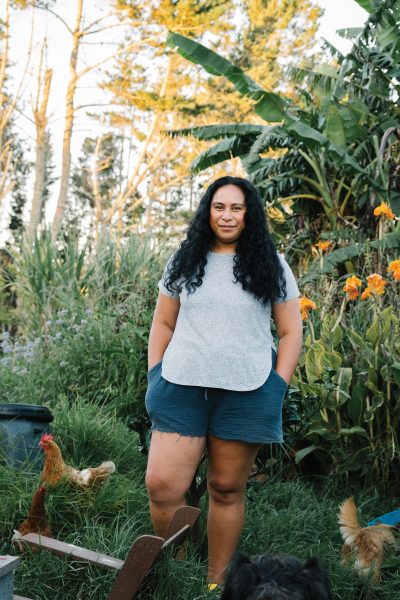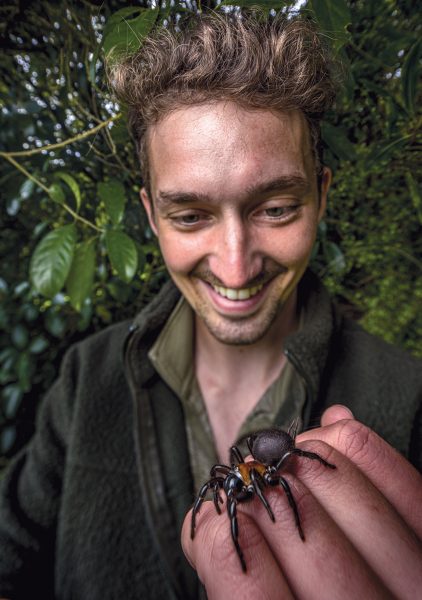Birdman
An amateur Christchurch ornithologist mobilised a town to save a bird.

In the summer of 1965, Geoff Harrow, a pharmaceutical salesman, went looking for a seabird in the Kaikoura Ranges.
Six weeks earlier, he had asked a local motel proprietor if sooty shearwaters nested on the Kaikoura coast. “Oh no,” Ivan Hislop told him. “They’re not on the coast. They’re way up in the mountains, right up in the snow.”
Harrow was astonished. No seabirds were known to nest above the bushline. He wondered if these were Hutton’s shearwaters, a little-known species occasionally recognised at sea, but never on land.
Kaikoura locals and goat cullers corroborated the story, and Hislop had a clear memory of encountering the birds on a deer-stalking expedition more than a decade earlier. Harrow followed Hislop’s directions to the head of the Kowhai River, nine hours’ hard slog up steep bluffs, and sure enough, he found their burrows, more than a thousand metres above sea level. “In my solitude I was ecstatic,” he says. “I yodelled madly.”
Three specimens he brought home were examined by the Dominion Museum, which confirmed by telegram: these were the mysterious Hutton’s shearwater.
Next, Harrow reported his discovery to Ngai Tahu and Ngati Kuri kaumatua, who recognised the bird as the Kaikoura titi, a taonga which had helped their ancestors survive harsh winters. “They were hoping their titi were up there somewhere, but they didn’t know where,” says Harrow. “What I really did was to tie all these people together and say all these birds are the same one.”
Over the summer months, the Hutton’s shearwater nests in burrows it digs on tussocky ground. To feed, it hurtles down to the ocean with a tail wind at more than 150 kilometres an hour. Kaikoura residents would occasionally find shearwaters that had crash-landed, confused by fog and town lights, unable to take off without water beneath their feet or a ledge to fling themselves from.
After discovering four more colonies in the Kowhai Valley, Harrow expanded his search, driving up the coast from Christchurch on Friday nights after work and sleeping at the road end before Saturday’s long hike. “I spent years working along all the ranges, looking in every high basin both on the Seaward Kaikouras and on the Inland Kaikouras,” he says.
He found three further colonies at the northern end of the range, and distilled his observations into a series of reports for the New Zealand Ornithological Society journal Notornis, but he knew the birds needed full-time attention rather than a weekend warrior. “I’m not an ornithologist, I’m not a scientist,” he says.
Harrow, the youngest of five, grew up in Depression-era Christchurch, where he had the most comprehensive bird’s-egg collection of anyone at Riccarton School. His bicycle was homemade, the roads were mostly shingle, and the Southern Alps a painted backdrop just visible on clear winter days. He made his first attempt to reach them on his bike at eight (he made it to Racecourse Hill, about 50 kilometres away), encouraged by his older sister Kathleen, who gave him a Forest and Bird membership four years later.
In his third-form August holidays, Harrow bicycled across Lewis Pass bound for Westport, but World War II got in the way. “People were scared of the Japanese coming to New Zealand and they didn’t want to leave the road signs up to help them invade. So I made a wrong turn and I was heading for Nelson.”
It was August, and Harrow hardly saw a vehicle as he rode home through Arthur’s Pass, where he stayed in the shearers’ quarters at Flock Hill Sheep Station and asked for a job, emboldened by stories of how much schoolboys earned picking up fleeces in the holidays. The station became his summer home, and the Craigieburn Forest his playground, where he began his lifelong habit of devoting his spare time to the outdoors.
If Harrow wasn’t paying a visit to the Hutton’s, he was tramping, hunting or climbing elsewhere. Many Monday mornings saw him bone-tired at a job that demanded quick thinking: selling pharmaceuticals to doctors, hospitals and pharmacies around New Zealand and the Pacific Islands.
Meanwhile, the number of Hutton’s dwindled from eight colonies to two. Harrow sought advice from Wildlife Service ornithologists, many of whom joined him on weekend trips, and he learned how to band the legs of birds to monitor the population.
In the 90s, the new Department of Conservation determined that a third colony should be artificially established on the Kaikoura Peninsula in order to bolster population numbers. Many translocated chicks were killed by predators until Harrow formed the Hutton’s Shearwater Charitable Trust to fundraise for a predator-proof fence, and in the process brought the story of the bird to the Kaikoura community. “People realised how special they were, and how no one else has them,” he says.
The trust’s efforts were so successful that it took over chick translocation and colony management from DOC. Moreover, Kaikoura now holds celebrations to farewell the shearwaters when they leave for warmer climes and to welcome them home to nest.
Now 88, Harrow has stepped back from the trust, satisfied that others are pursuing his goals with the same energy. He’s looking forward to the return of four-year-old shearwaters next year, another generation safeguarded by the work he started.

















